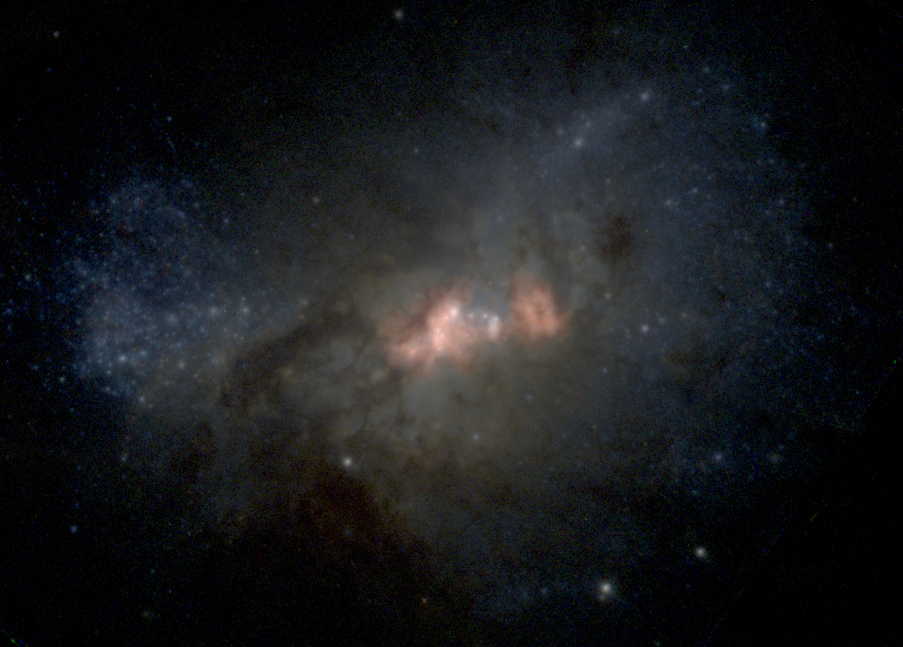The AAS is off to a good start:
Reines et al have found a good supermassive black hole candidate in Henize 2-10 - an irregular bulgeless dwarf galaxy about 10 Mpc away.
A dwarf irregular, with a diameter of only about 1 kpc, Henize 2 is in starburst. It contains a number of
massive, very young super star clusters.
SMBH are seen in almost every galaxy and, in the local universe, are correlated with the galactic bulge mass.
One of the open issues is which came first, the black hole or the galaxy.
Henize is bulgeless, and if it genuinely has a real SMBH, that would strongly hint that the black hole comes first and the
galaxy assembles around it later.
The evidence for the SMBH is indirect, strong radio source near the middle of the galaxy, found at the NRAOs VLA, and
followup observations by Chandra showing a high energy x-ray source at the same location, suggestive of a low luminosity
active galactic nucleus with a jet.
The authors suggest an estimate black hole mass of about a million solar masses.
If this is the case, it also suggests that at least some supermassive black holes form directly with
masses of hundreds of thousand of solar masses, through some direct collapse mechanism, rather than growing
slowly from a lower mass seed black hole.



Can this be done with early hierarchical growth of dark matter that is far heavier than the TeV scale? My gut feeling is no.
Also, given that the sample size is only one at this point, could this have been a particular case where a merger ejected an SMBH, around which the IGM is now collapsing into a new galaxy?
You really need some relaxation - ie CDM self-interaction - to get dark matter fueled SMBH growth
Ostriker had a nice paper on it a few years ago.
Very very unlikely to be an ejected SMBH
That's VERY interesting...and how has the mass of the black hole been calculated? What method has been applied?